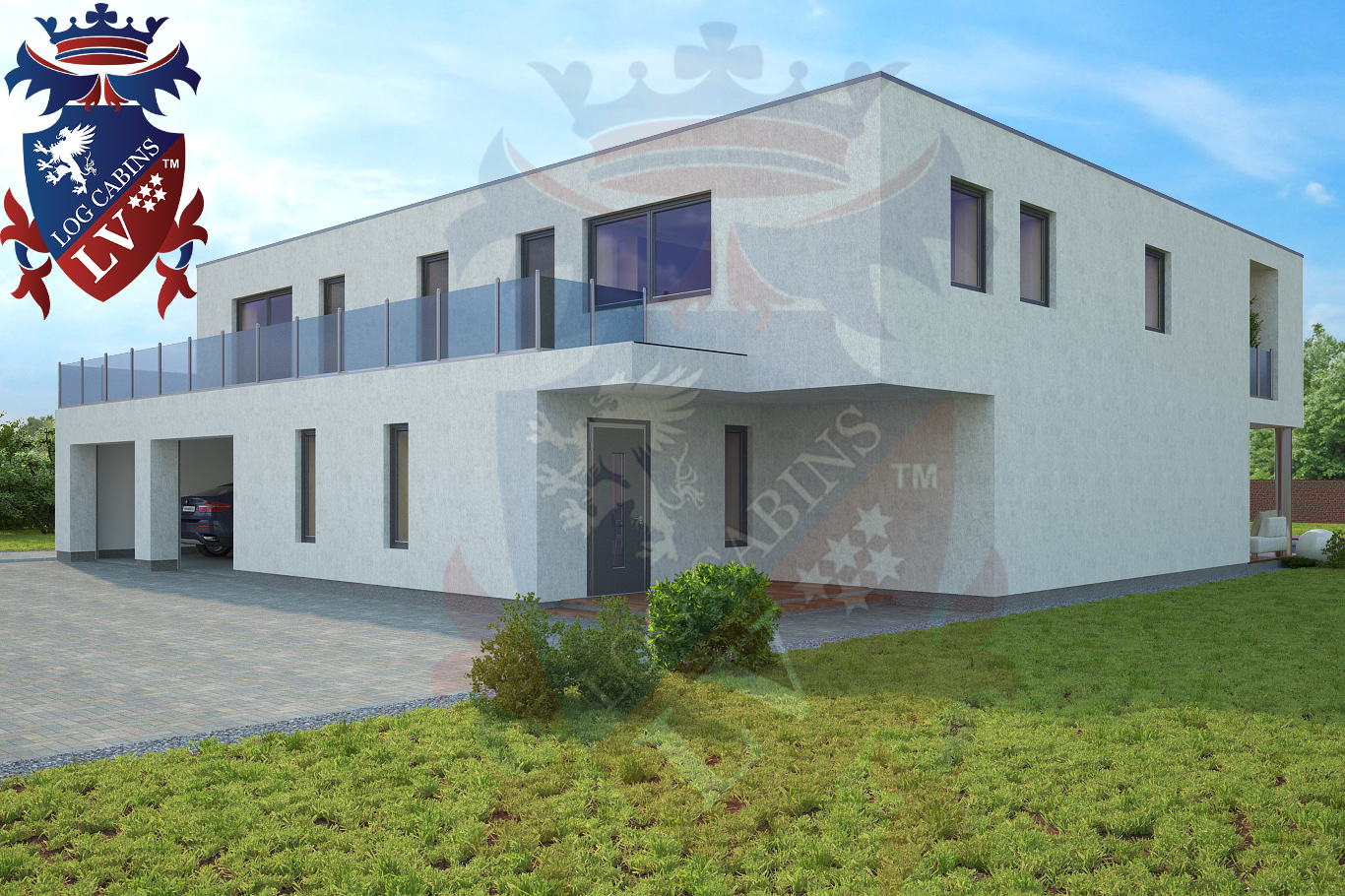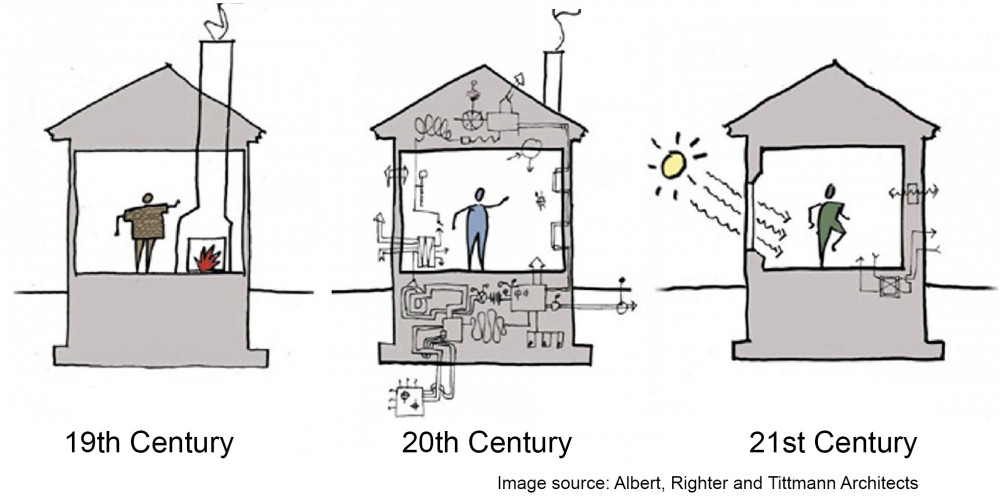A Guide to Passive Houses: Designs, Costs and Benefits
Table Of Content
Passive House designs utilize both methods to keep ventilation energy to a minimum. In a tropical climate, passivhaus standard have proven to be helpful for ideal internal conditions by using energy recovery ventilation instead of heat recovery ventilation to reduce the humidity load of ventilation on the mechanical dehumidification system. Although dehumidifiers might be used, heat pump hot water heaters also will act to cool and condense interior humidity (where it can be dumped into drains) and dump the heat into the hot water tank. Passive cooling, solar air conditioning, and other solutions in passive solar building design have been studied to adapt the "passive house" concept for use in more regions of the world.
High-Performance Windows and Doors

The know-how to design a passive house and how to improve an existing building step by step to come near to passive house standard - you'll find just here, from the pages of passipedia. Buildings of this kind often make use of triple glazing, solar heat gain and energy recovery ventilation systems. This means they can maintain an almost constant temperature, requiring little energy for heating and avoiding high energy bills. Next, it is critical to control solar radiation to achieve optimal passive house design.
Solar Gain Optimization
Passive home designers balance heat and energy from the sun by determining when it is needed (called daylighting) and using shading strategies when it is not needed. Phius is the cost-optimized, climate-tailored standard for passive buildings on the path to zero energy. In addition, Phius is the only passive standard where your home (or building) is quality assured by a third party, so you can count on an extremely comfortable, healthy, and resilient structure that's built to last. Passive building is a set of design principles for attaining a rigorous level of energy efficiency while also creating comfortable indoor living spaces.
Passive House Design: What All Energy-Conscious Homeowners Should Know
Tour this Boise Passive House - Wallpaper*
Tour this Boise Passive House.
Posted: Tue, 26 Mar 2024 07:00:00 GMT [source]
Phius trains and certifies professionals, maintains the Phius climate-specific passive building standard, certifies and quality assures passive buildings, certifies high-performance building products and conducts research to advance high-performance building. Because so much heat is recovered from the ventilation, and so little is lost or gained through the walls, not much “active” heating or cooling was needed when the Passive House concept was conceived, hence the original name Passivhaus or Passive House. However, as the concept has spread geographically, the climate has warmed, and new technologies have been developed. While many are taking steps to reduce their carbon footprint at home by keeping energy and water usage at a minimum with more eco-friendly appliances and HVAC equipment, others are exploring off-grid living, Earthship homes, and passive house design.
Viñoly's first Canadian project
Although the initial construction costs of a passive house may be slightly higher, the substantial energy savings over time make it a wise investment. The reduced maintenance expenses, enhanced property value, and environmental benefits make passive houses a smart choice for those who prioritize long-term financial stability, comfort, and sustainability. They are not just houses; they are wise investments in a brighter, more sustainable future. Passive houses use up to 90% less energy for heating and cooling compared to conventional homes, resulting in significantly reduced energy bills and carbon footprints. The primary driver of these incredible energy savings in passive houses lies in their holistic design approach.

As the demand for sustainable housing continues to grow, so too will the innovation and creativity driving this transformative movement toward a more sustainable and harmonious built environment. By leveraging the power of artificial intelligence and data analytics, smart homes can adapt to occupants’ preferences and environmental conditions to maximize efficiency and comfort. Integrating smart home technologies into sustainable housing allows for greater control and optimization of energy usage. Stay informed on the Passive House building standard, project developments, upcoming events and courses.
The Five Key Passive House Principles
At this event, hundreds of Passive House residents open their doors to anyone interested in getting a hands-on experience of living in a Passive House. The International Passive House Days are put on by the International Passive House Association (iPHA) and its German affiliate, IG Passivhaus.
Ventilation
The world's tallest "passive house" was built in the Bolueta neighborhood in Bilbao, Spain. At 289 feet (88 m), it is currently the world's tallest building certified under the standard in 2018. The $14.5 million, 171-unit development (including a nine-story companion to the high-rise) consists entirely of social housing. Because they are so tightly sealed, Passive House buildings need well-designed ventilation. Continuous ventilation of fresh air and the evacuation of stale air from kitchens, bathrooms, and basements is necessary to prevent smells, air pollutants, CO2, and humidity from accumulating. Foundations, walls, floors, doors, windows, and roofs are insulated without gaps between them.
Future of furniture design
For low-light days, non-daylighted spaces, and nighttime, the use of creative-sustainable lighting design using low-energy sources can be used. Insulation of window frames is important, too, as frames can constitute up to 10% of a window surface area and represent the greatest point of unwanted heat loss. In the Northern Hemisphere, windows on the north or west side of the house will be smaller, just enough to reduce or eliminate the need for artificial light in the daytime. On the south side, the windows will be larger to capture the sun's heat in cooler months.
Neighbouring the Catskill mountains in upstate New York, this beautifully green home fits easily into its leafy surroundings. So, in order to enjoy all of those energy-saving tweaks to the maximum, you’d need to be in a position to build a new home from scratch. As this graphic shows, a Passive House needs just 15 kWh of heating energy per square metre net floor surface per year (15 kWh/m2a). Superinsulation is a way of building that creates much greater levels of insulation than usual. This low-energy dwelling in South Dakota was created by architects Robert Arlt and Charles MacBride with a group of local architecture students to draw attention to the possibilities of sustainable construction. The dwelling, aptly named TreeHaus, has a highly efficient envelope to ensure it stays warm during cold winter months when snowfall is frequent.
The meticulous combination of super-insulation, airtight construction, energy recovery ventilation, and strategic solar gain management creates an environment where heat is retained in the winter and excessive heat is kept at bay in the summer. While some techniques and technologies were specifically developed for the "passive house" standard, others, such as superinsulation, already existed, and the concept of passive solar building design dates back to antiquity. There were other previous buildings with low-energy building standards, notably the German Niedrigenergiehaus (low-energy house) standard, in addition to buildings constructed to the demanding energy codes of Sweden and Denmark. Windows and doors are designed to minimize heat transfer far more effectively than normal windows, to the point that they feel as warm inside as the air, eliminating condensation in winter. They are airtight to maintain that airtight building layer, and are carefully sized and treated with coatings to admit solar gain in cool seasons without overheating in warm seasons.
A passive house (“passivhaus” in German) is a design standard that delivers healthy, comfortable, and efficient homes using a holistic approach. Essentially, these homes heat and cool themselves, cutting energy bills by about 90 percent. Homeowners often report that they don’t even have to turn on their heat during the winter because of the way their passive house is designed.
The process includes using modeling software to predict how all the specs will perform once built. Then during construction, all components are documented in measured photographs to prove the project is built as designed. In conclusion, sustainable housing trends are reshaping the way we conceive, design and inhabit our living spaces. Reduced energy use also requires a much smaller solar photovoltaic system in order to be Net-Zero. By choosing renewable and efficient building materials, PASSIVE HOUSES can be built carbon neutral.
The delivery of filtered fresh air with heat recovery helps make Passive House buildings havens of clean air and energy efficiency. Inside these devices, a heat exchanger—a honeycomb of straws that creates a very large surface area between air streams—allows heat energy in the outgoing air to passively transfer to and warm the incoming air without the two airstreams ever mixing. (In the summertime, the opposite happens, with cool outgoing air cooling the incoming air.) Filters in the unit remove pollen and pollutants, with pre-filters available to protect indoor air from intense outdoor pollution events. PHLA+ is a project designed by PARAVANT Architects strategically planned to showcase the international passive house construction standard.
Passive buildings continually exhaust air from bathrooms, kitchens and other areas with stale air and supply fresh air to living and working spaces. This was discussed earlier for repeating thermal bridges in the general wall and roof assemblies, but Passive House designs also aim to be thermal-bridge-free when it comes to architectural interface details. These are parts of the building where different architectural features meet that require additional attention in construction. Examples include how a window is attached to the walls, how a wall meets a balcony, and how walls meet at corners, as shown in Figure 3. The way these building features connect and are designed can also introduce thermal bridging that’s not always easy to recognize. It is important not only to make sure to specify high-performance windows, but also to carefully consider how they are incorporated into the building design.
Comments
Post a Comment